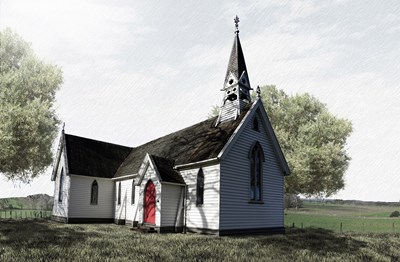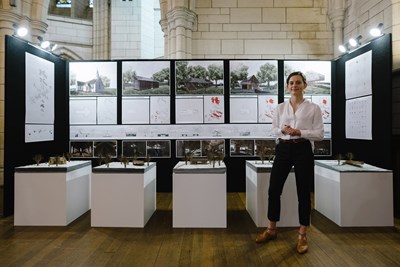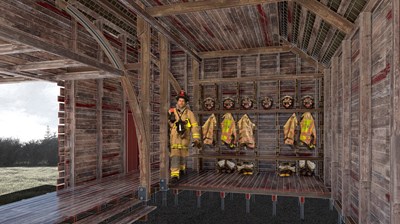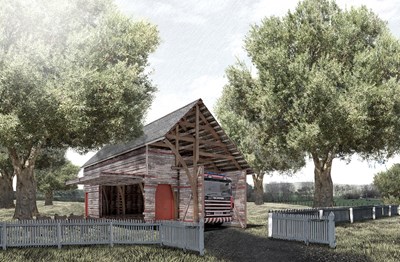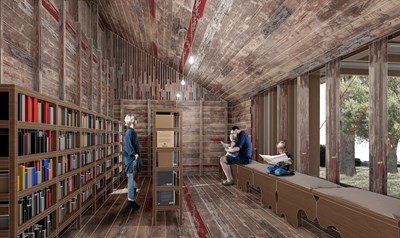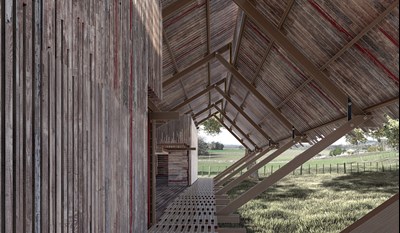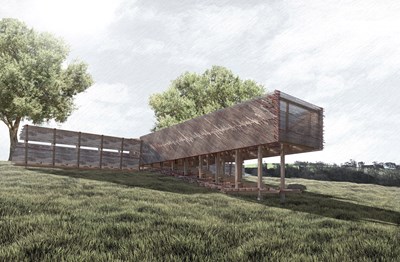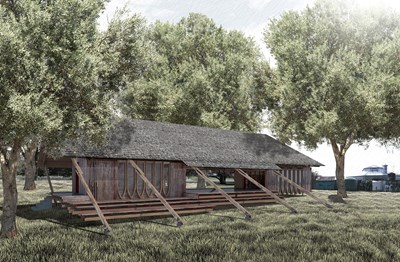Abby-Jane Taylor of Te Whare Wānanga o Tāmaki Makaurau The University of Auckland, School of Architecture and Planning, was highly commended at the 2020 Te Kāhui Whaihanga Resene Student Design Awards for her project 'Reassembling the Assembly'.
Project description
The ongoing depreciation of religious and civic architecture in rural areas drives the development of this project. As the needs of small communities change but the architecture associated with these needs idles, this project explores how existing architecture can respond and accommodate diversity. Through challenging our bias towards permanence as unchanged architecture, the project questions what can happen if we take responsibility for undoing the things we make. It investigates how considering the life cycle of a structure backward in time prompts designs that can adapt to the uncertain conditions of the future. Maintaining a reversed perceptive, it argues that we must learn from the past before we can design for the future, thus we must disassemble before we can assemble.
Disassembly is pursued as an alternative to demolition and a strategy for enduring architecture, while reassembly describes the design process of reusing existing built elements in new and exciting ways. The process starts with rigorous recording and documenting of original elements. These elements are then translated into new tectonic assemblies and unique spatial possibilities while the process remains a reversible intervention.
The inquiry is tested through four reassemblies of a deconsecrated church in rural Hawke’s Bay. Each reassembly aims to foster a strong connection to place, which was lost when the church dwindled into obsolescence. Informed by new understandings of the natural environment and the changing needs of the community, the outcomes address contextual changes while encouraging local engagement through community participation. Each reassembly follows a familiarity of scale and materiality but departs from the formal religious structure and programme. Through maintaining the lightweight, layered timber-frame construction alongside the introduction of new connections and reversible combinations, the outcomes maintain relevance and persistence over time, yet embrace the future.
Judges' citation
This project brings into question commonly accepted conventions of ‘heritage’. Through a rigorous process of documentation, Abby-Jane reduced Christ Church at Pukehou down to its component parts before reassembling them into three theoretical new forms that sensitively and beautifully enhance their community while retaining the materiality of the church. This project clearly identifies notions of assembly, disassembly and adaptability that allow for recognition of the value of heritage material while ‘re-designating’ it as a renewable, reconfigurable resource. Robust and thorough processes for conceptual development, high attention to cataloguing and reconnective detailing and iterative reassembly makes for a thought-provoking proposal.




